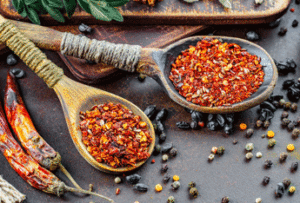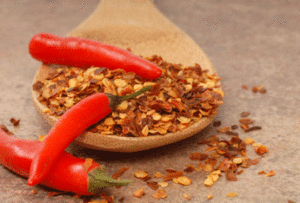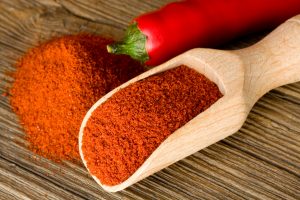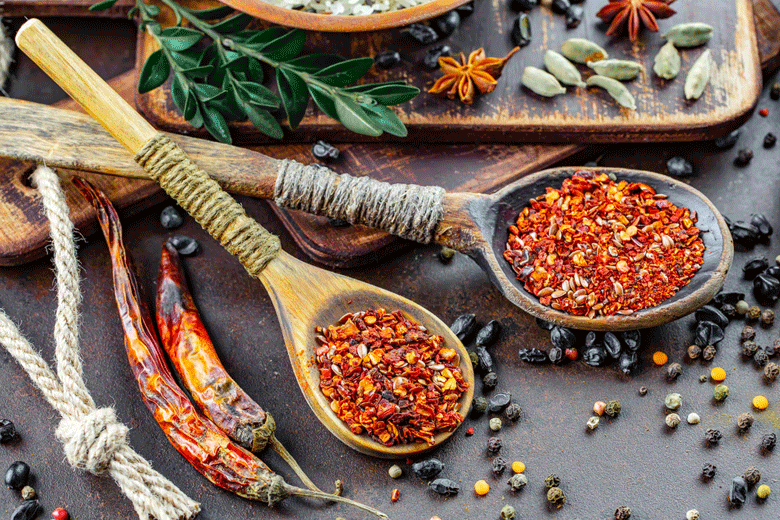
Nothing adds flavour faster to favourite foods than Chilli spice rubs, flakes and powders. Be it adding a rub to your ribs before barbequing, sprinkling chilli flakes on your pizza or adding colour and flavour to a curry; ground Chillies take the top spot.
In this section, learn how to make your own Chilli rubs, flakes and powders. All it takes is some dried Chillies (homegrown or bought), a grinder, a bit of imagination, and you are on your way to some exciting flavour discoveries. Happy grinding!
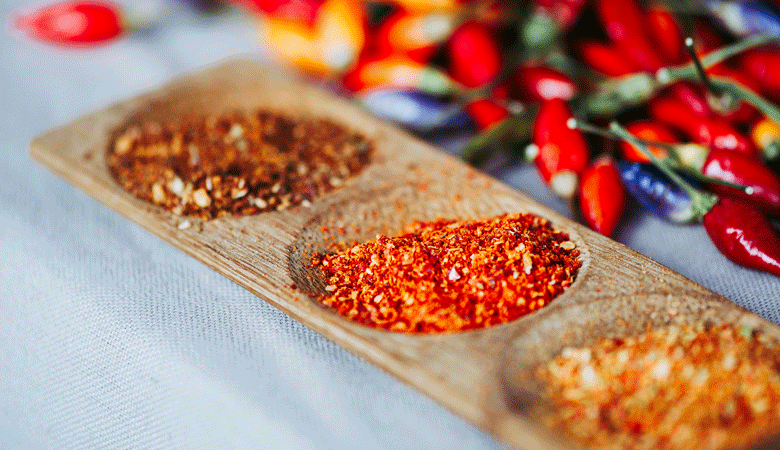
All Chillies can potentially used to make Chilli Powders and flakes. Some Chillies, however, because of their unique qualities in terms of taste, colour or heat, may be a better choice for making these products. Kashmiri Chillies for example are known for their ability to impart a red colour and heat to a dish, and Chipotlas for the smoky earthy character they lend to food.
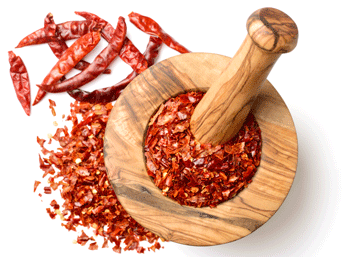 Drying Chillies that you have grown yourself to make the best Chilli powders, flakes and rubs is the ideal. To get a really good result, you are looking to dry Chillies at the peak of their ripeness, rather than simply using the last of your homegrown crop. The intention should be to make your powders, flakes and rubs from the very best Chillies you can get your hands on. The end result will be worth it.
Drying Chillies that you have grown yourself to make the best Chilli powders, flakes and rubs is the ideal. To get a really good result, you are looking to dry Chillies at the peak of their ripeness, rather than simply using the last of your homegrown crop. The intention should be to make your powders, flakes and rubs from the very best Chillies you can get your hands on. The end result will be worth it.
Bear in mind that all making powders or flakes requires is to grind dried Chilles to the desired level of fineness or coarseness ( as the requirement may be). They are not mixed with other spices as with rubs , so the one ingredient you are using should be the very best. Dehydrating Chillies concentrates their flavour) and grinding them allows the final product to mix more readily with other ingredients. This provides a more intense depth of flavour.
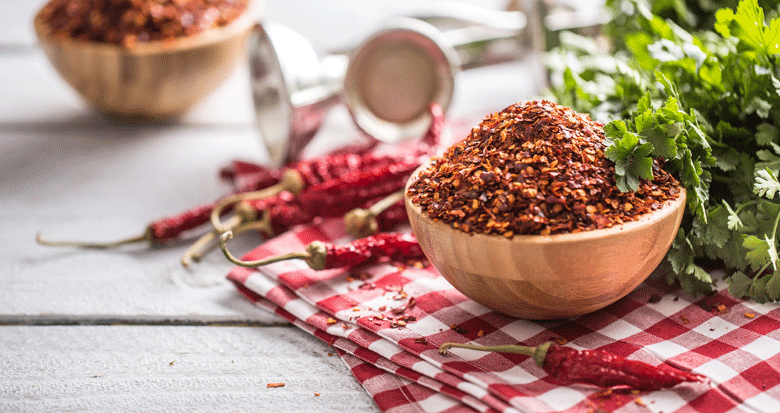
For flakes and powders
The following Chilies provide special qualities for making Chilli powders and flakes
Mild and medium Chillies
These are the everyday Chillies that you would use in the kitchen. While Cayenne Chillies are a healthy 30000 to 50000 SHU, unless you use an exceptionally large amount, they will do nothing more than add a pleasant bite to your spicy dishes. The type of pungency that most people can take without breaking into excessive sweating
Mild Chillies, on the other hand, are definitely there for flavour and colour (with just a hint of heat). The Kashmiri and Pasilla Chillies provide a distinctive taste and add colour – bright red in the case of Kashmiri chillies and black for Passilas. Similarly, Anchos provide a smoky flavour and a blackish colour
Medium and Mild Chillies can be used together to provide different characteristics to a dish. For example, in making a dip, one can give piquancy and the other decoration. A dip like Spicy prawn dip illustrates this brilliantly. In this dish, Chilli powder may be used for flavouring, and Chilli flakes are used for decoration.
Aleppo Chilies
This makes powder and flakes with a moderate heat level of about 10000 SHU. It has a mild cumin-like flavour with raisin-like fruity notes. Used to make dishes like Hunkar Begendi and as a general seasoning. Genuine Aleppo Chillies may be difficult to get hold of, but if you can find them, the effort will be worth it.
Ancho ( dried Poblanos).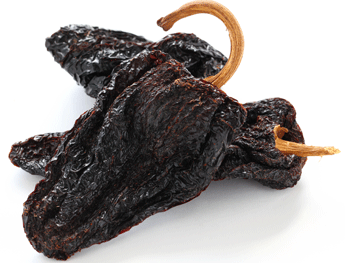
This mild Chilli has a sweet chocolate-like flavour. It is used in Mexican cooking to make sauces and stews. It is also sprinkled over meat, or used as a general seasoning. They have a Scoville rating of 1000 to 2000 SHU
Chipotles ( smoked Jalapenos)
These smoke-dried Chillies give dishes a mild, earthy and smoky flavour. Chipotle powders and flakes are typically used in Chilli con carne or in stews. They can also be used to season snacks, eggs, and as an ingredient in a BBQ sauce. Their Scoville heat rating is between 5000 and 8000
Cayenne Chillies
Provides medium to spicy heat. For use in curries, Chilis and spicy stews. Excellent as a ground Chilli flake for general seasoning of vegetables, eggs, etc. These Chillies have a SHU rating of 30000 to 50000 SHU
Hot Chillies
These are at the top end of the heat scale when it comes to regular eating Chillies. The reasons for wanting to turn them into flakes and rubs are very much as above, but another advantage is definitely the added flavour that they can bring to dishes.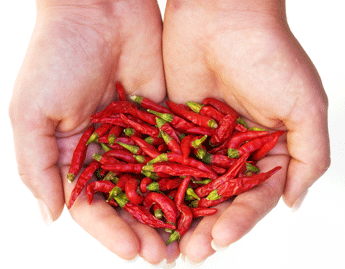
This flavour dimension is well illustrated in the use of Scotch Bonnets in Jamaican cooking, the Portuguese use of Piri-Piri and Malagueta Chillies, and that many dishes get their distinctive flavour from Habaneros.
Grinding these Chillies means they can be used to combine with fresh Chillies to concentrate the flavour of homemade hot sauces and Chilli oils. The most crucial use, though, is being able to add that dash of flavour and spiciness to your dish just when you need it.
Exercise caution when working with these Chillies
Habanero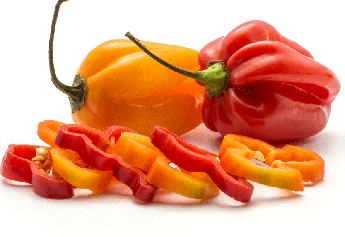
These Chilli powders are used as the base in Moles, Chilis and hot sauces in Mexican cooking. They have a sweet, fruity flavour that goes well with tomato bases. The Habanero Chilli has a Scoville rating similar to the SHU rating to that of the Scotch bonnet (with which it is often confused)
Scotch Bonnet
Hot Chili from the Caribbean with a Scoville rating of between 100000 and 400000 SHU. It has a fruity and sweet taste. Powders and flakes from these Chillies are extensively used in West Indian cooking, and generally in spicy cuisine at the upper end of everyday pungency level. It can be used to make curries and gives dishes like Jamaican Jerk Chicken its distinct taste
Peri-Peri
A fiery Bird's-Eye Chilli from Africa. It has a sharp bite and adds great flavour as a general seasoning for spicy stews, barbecued meats and poultry. This seasoning is not for the faint-hearted, with a SHU of up to 175000 SHU
The Super Hots
One might ask - why make Chill flakes and powders with Super Hot Chillies. Aren’t they just too hot to eat? Fair question, but there are reasons to use them
Firstly, using fresh Super Hots can be wasteful. As an example, the Seven Pot Douglah gets its name because one Chilli is hot enough to spice seven pots. How many of us make seven pots of anything? So what happens is that only a bit of the Chilli gets used and rest either frozen or binned.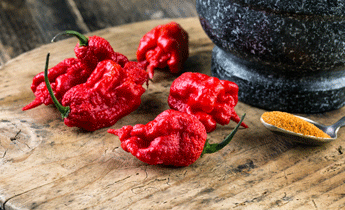
Another reason is that handling fresh Super Hots is uncomfortable (or should I say, somewhat dangerous).) So, if you are going to handle them, minimise the risk by going through the danger once - in drying and grinding them (suitably equipped, of course) once. You will then have a ready supply on hand to use when you need them (still exercising caution though) for many cooking sessions.
A note of caution. When preparing these Chillies for drying or grinding, make sure you have the right equipment. Wear long sleeves, gloves and eye goggles. Avoid touching exposed parts of the body after handling them. Once you have finished, make sure you wash everything in contact with Chillies well.
Carolina Reaper.
The Carolina Reaper is officially the world's hottest Chilli, so extreme caution needs to be taken when making powders and rubs with it.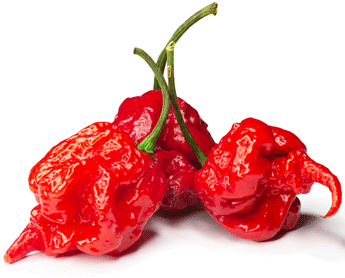 Eye goggles and gloves should be the order of the day. It can be used as a general seasoning when used in moderation, like scrambled eggs, and in hot curries like Vindaloo and Phall. Its taste is described as fruity followed by extreme heat. Its Scoville rating is 1500000 SHU. Be very careful with this Chilli!
Eye goggles and gloves should be the order of the day. It can be used as a general seasoning when used in moderation, like scrambled eggs, and in hot curries like Vindaloo and Phall. Its taste is described as fruity followed by extreme heat. Its Scoville rating is 1500000 SHU. Be very careful with this Chilli!
Bhut Jolokia ( Ghost pepper)
Another Chilli falls into the superhot category, where caution is advised when preparing powders and flakes. The Ghost pepper can be used as a general seasoning in sauces, curries, spicy stews, chutneys, and pickle. These powders and flakes have a SHU of about 1000000 SHU. Be careful with this Chilli!
For Rubs
Rubs are generally a blend of Chillies, spices, salt, sugar, onion and garlic powder. Here you are looking to find a Chilli that best combines with these other ingredients to provide the best possible end product. Paprika, Cayenne, Scotch bonnet, Habanero and Peri Peri Chillies are all excellent choices for making rubs. They may be used on their own or combined with paprika and sometimes even Kashmiri Chillies for additional flavour and to provide colour
In conclusion
As a general rule, Chilli powders are single-ingredient products and rub multi-ingredient. It should be noted that a Chile powder may not be considered a single ingredient product in some parts of the USA. As a simple Chile powder, it could consist of Chillies and spices, while an Ancho Chilli powder, for example, would be understood to be just made with Anchos. Similarly, a distinction needs to be made between Chilli powders made with Cayenne Chillies (generally long and slim) and Cayenne powder. Cayenne powder, while sharing the same name, is actually typically made with Birds-eye Chillies [Source: Wikipedia]
Enjoy making your Chilli rubs , flakes and powders

